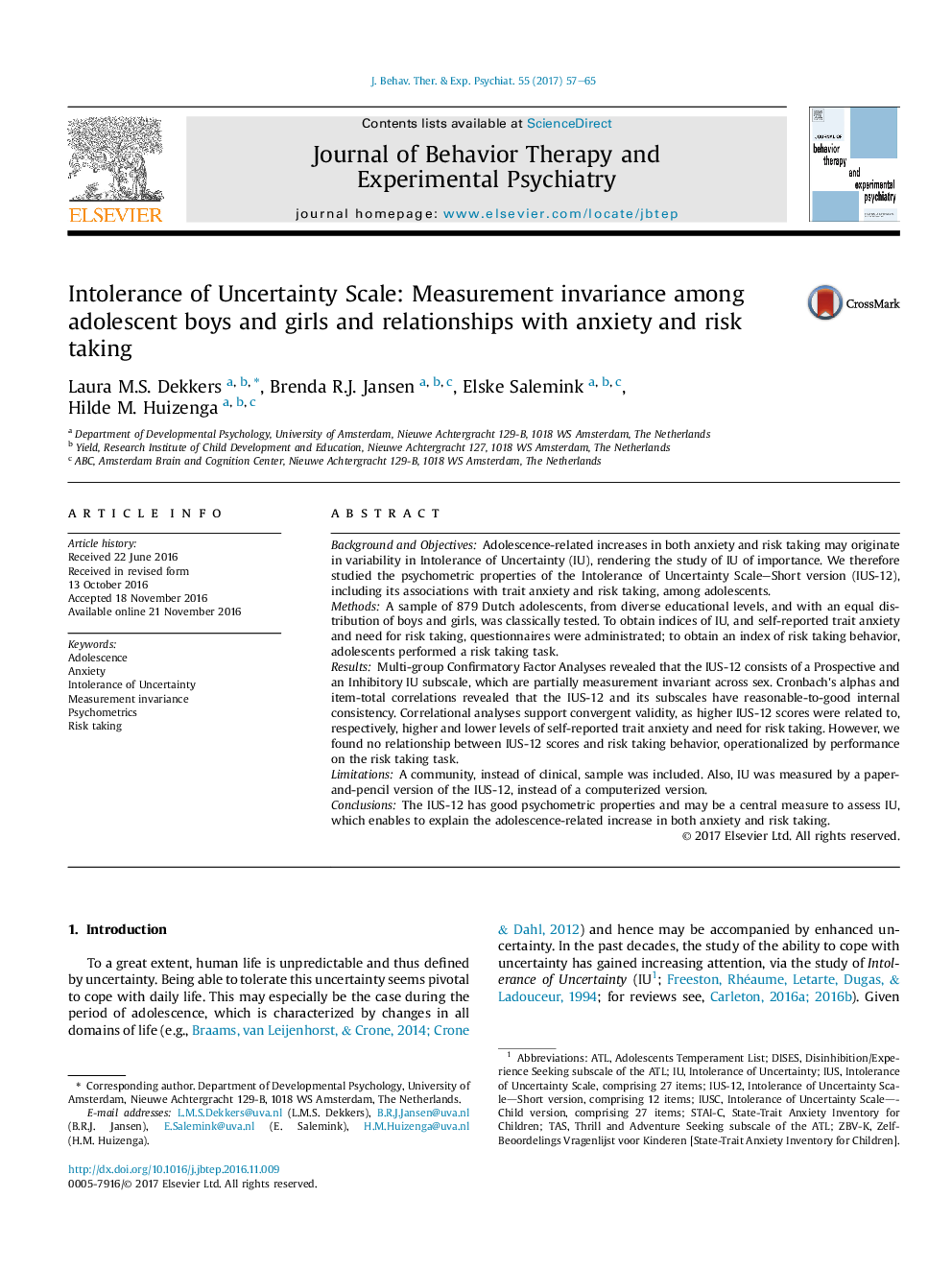| Article ID | Journal | Published Year | Pages | File Type |
|---|---|---|---|---|
| 5039053 | Journal of Behavior Therapy and Experimental Psychiatry | 2017 | 9 Pages |
•Intolerance of Uncertainty (IU) may be linked to adolescent anxiety and risk taking.•The Intolerance of Uncertainty Scale–Short version was studied in 879 adolescents.•The scale consists of two subscales—partially measurement invariant across gender.•Higher IU predicts higher self-reported anxiety and lower self-reported risk taking.•No relationship between IU and performance on a risk taking task was found.
Background and ObjectivesAdolescence-related increases in both anxiety and risk taking may originate in variability in Intolerance of Uncertainty (IU), rendering the study of IU of importance. We therefore studied the psychometric properties of the Intolerance of Uncertainty Scale–Short version (IUS-12), including its associations with trait anxiety and risk taking, among adolescents.MethodsA sample of 879 Dutch adolescents, from diverse educational levels, and with an equal distribution of boys and girls, was classically tested. To obtain indices of IU, and self-reported trait anxiety and need for risk taking, questionnaires were administrated; to obtain an index of risk taking behavior, adolescents performed a risk taking task.ResultsMulti-group Confirmatory Factor Analyses revealed that the IUS-12 consists of a Prospective and an Inhibitory IU subscale, which are partially measurement invariant across sex. Cronbach's alphas and item-total correlations revealed that the IUS-12 and its subscales have reasonable-to-good internal consistency. Correlational analyses support convergent validity, as higher IUS-12 scores were related to, respectively, higher and lower levels of self-reported trait anxiety and need for risk taking. However, we found no relationship between IUS-12 scores and risk taking behavior, operationalized by performance on the risk taking task.LimitationsA community, instead of clinical, sample was included. Also, IU was measured by a paper-and-pencil version of the IUS-12, instead of a computerized version.ConclusionsThe IUS-12 has good psychometric properties and may be a central measure to assess IU, which enables to explain the adolescence-related increase in both anxiety and risk taking.
